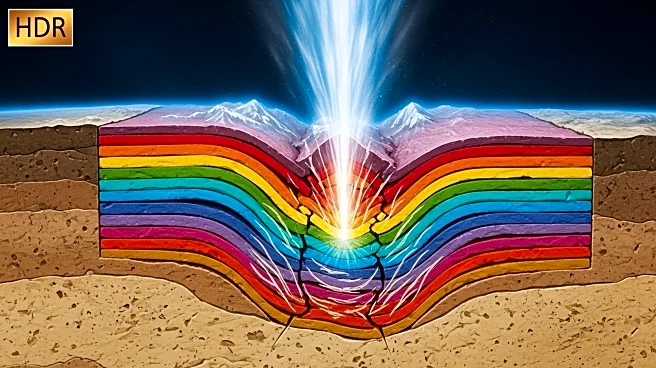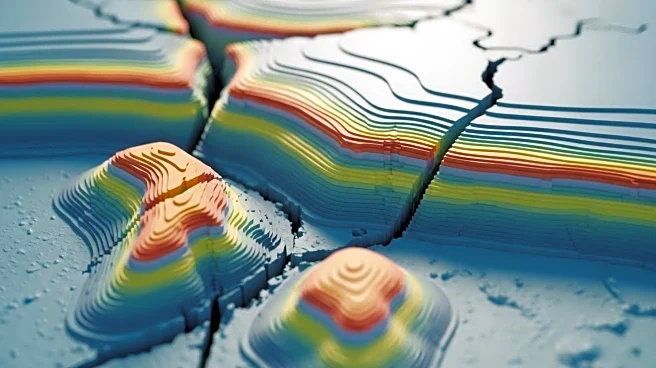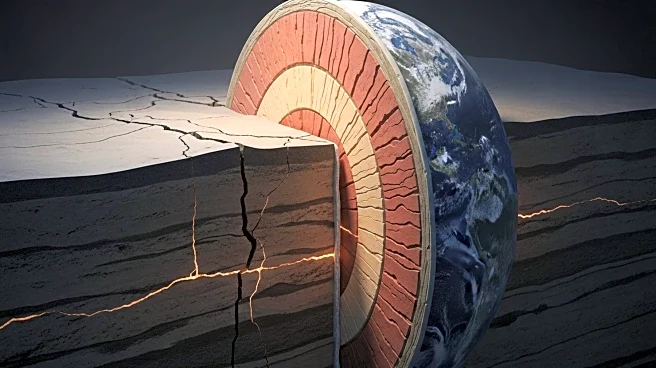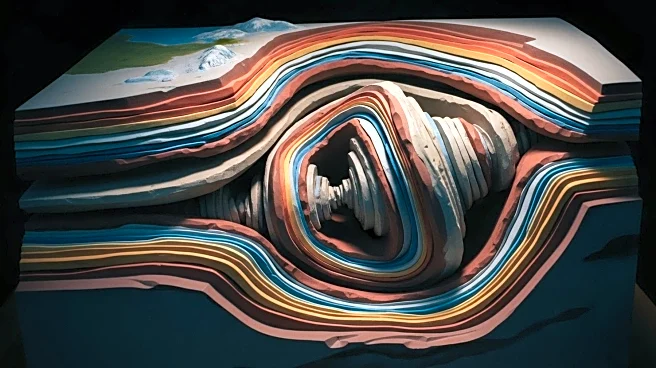What is the story about?
What's Happening?
Researchers from the University of Texas at Austin have identified a new mechanism that contributed to the intensity of a 7.4-magnitude earthquake in Calama, Chile, in July 2024. Unlike typical megathrust earthquakes, which occur at shallow depths, this quake originated 125 kilometers beneath the Earth's surface. The study, published in Nature Communications, reveals that the earthquake's strength was amplified by a process called 'thermal runaway,' which allowed the rupture to extend into hotter zones beyond the usual dehydration embrittlement limit. This discovery challenges previous assumptions about intermediate-depth earthquakes and provides new insights into the tectonic forces at play.
Why It's Important?
The findings have significant implications for earthquake hazard assessments and emergency response planning. Understanding the mechanisms that can increase the intensity of intermediate-depth earthquakes is crucial for predicting potential damage and preparing for future seismic events. The research highlights the need for improved monitoring and infrastructure planning in regions prone to such earthquakes. By identifying the factors that contribute to the strength of these quakes, scientists can better inform early warning systems and rapid response strategies, potentially reducing the impact on affected communities.
What's Next?
The study's authors emphasize the importance of continued research into the behavior of earthquakes at various depths. This includes deploying more seismometers and geodetic stations to monitor seismic activity and crustal deformation in earthquake-prone areas like Chile. The goal is to enhance predictive models and improve the accuracy of earthquake forecasts, ultimately aiding in the development of more effective mitigation strategies. As researchers gain a deeper understanding of the processes driving these powerful earthquakes, they hope to contribute to safer infrastructure design and more resilient communities.
AI Generated Content
Do you find this article useful?













